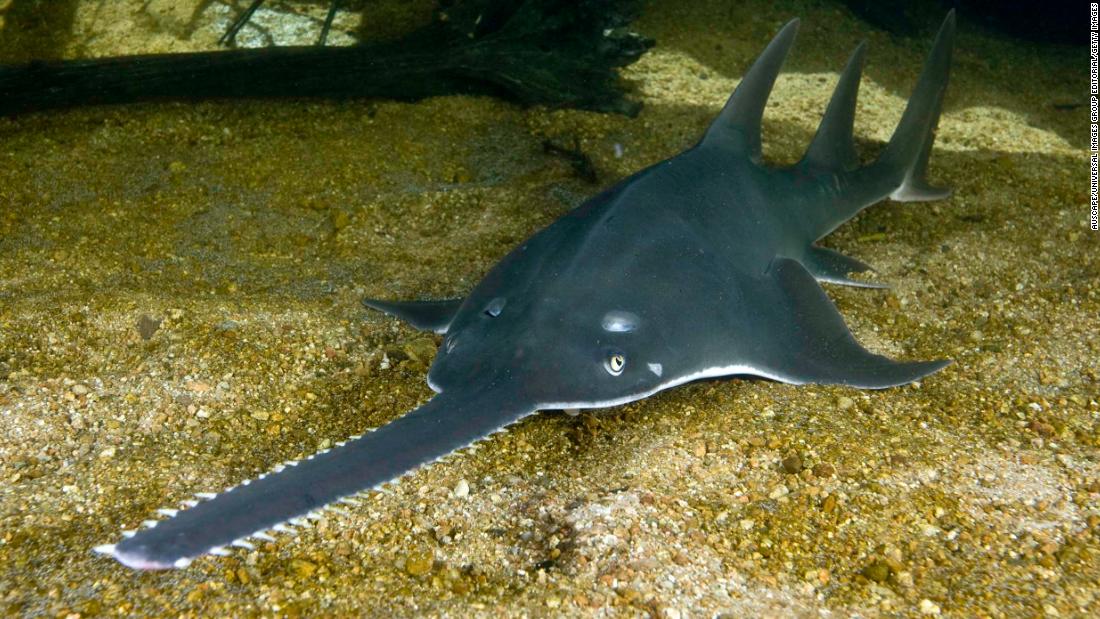But shark-like rays are on the verge of extinction, having disappeared from half of the world’s coastal waters, according to a new study.
The sawfish has already been found off the coast of 90 countries. But now they are some of the most endangered marine fish in the world and are now extinct in 46 countries, said researchers at Canada’s Simon Fraser University.
At least one species of sawfish is missing in 18 countries and two species have disappeared in 28 countries, the researchers said.
Three of the five species of sawfish are critically endangered and the other two are in danger, they warned.
Despite their alarming appearance, fish are not considered dangerous to humans, but their saws – which can reach one third of their total length – are used to feed, dig up animals and kill or maim other fish.
But the teeth on their “saws” – known as rostra – mean that the creatures are easily entangled in fishing nets, while their fins are valuable in the shark fin market. Their rostra are also sold as novelties, for medicine, and used as spurs for cockfights, the researchers said.
“Through the plight of the sawfish, we are documenting the first cases of large marine fish being driven to local extinction by overfishing,” said Nick Dulvy, professor of marine biodiversity and conservation at SFU, in a statement.
“We have known for some time that the dramatic expansion of fisheries is the main threat to ocean biodiversity, but a robust population assessment is difficult for low-priority fish whose catches have been poorly monitored over time,” he said.
They say they have identified “priority” countries where there is still a chance to save the species.
Conservation efforts must be made in Cuba, Tanzania, Colombia, Madagascar, Panama, Brazil, Mexico and Sri Lanka, where protections can save endangered species. Countries like the United States and Australia, which already have adequate protections and some sawfish, should be considered “lifeboat” nations.
“Although the situation is dire, we hope to make up for the bad news by highlighting our informed identification of these priority nations with the hope of saving sawfish in their waters,” said Helen Yan, researcher on marine biodiversity and conservation at SFU. “We also highlight our discovery that, in fact, it is still possible to restore sawfish to more than 70 percent of its historic range, if we act now.”
